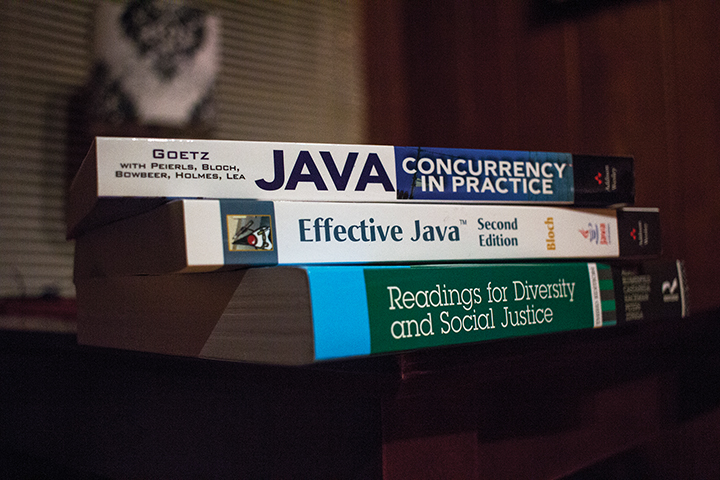Scott Roberts first became frustrated with the textbook market in 2010 when he had to update all the materials for the PSYC100: Intro to Psychology class he taught because a new, more expensive edition of the textbook was released and the company got rid of the old one.
To reduce textbook costs, which have concerned many students at the University of Maryland and elsewhere, members of MaryPIRG presented a “Covering the Cost” report along with other Student PIRGs across the nation.
Student PIRGs, student-funded advocacy organizations, have been working for more than a decade to try to reduce the cost of textbooks.
There are two main reasons textbook prices are so high, said Tom Klotz, the president of MaryPIRG, this university’s chapter.
“The textbook market doesn’t have what a typical market has in competition,” said Klotz, a senior government and politics major. “A normal market with several producers has to compete. … Whether they’re innovating or just reducing their prices to draw consumers towards their products.”
If students don’t like a textbook or can’t afford it, they don’t have the option to choose another one — they’re a captive audience, which is exacerbated by the fact that five companies control more than 80 percent of the market share, according to the report. Since 2006, the price of a textbook has risen more than four times the rate of inflation, according to the report.
Roberts’ experience with university textbooks validates Klotz’s observations of the textbook market.
“In hoking at the difference between the two, it was wildly superficial — some new photos, one or two new sentences, but nothing of real substance,” said Roberts, an affiliate senior lecturer in the psychology department. The new book cost about $70 more than the old one, and Roberts said he could not justify telling his students to spend that much on such a similar textbook.
In response to these high prices, Roberts began curating a collection of articles and videos that addressed the learning objectives he had for the course, essentially creating an open-source textbook. Open-source textbooks are created under a license that allows users to download, use and often adapt them for free. Teachers can then choose which chapters they want their students to read, and include videos, photos and quizzes with the material.
“Our experience in Intro to Psychology has been really successful,” Roberts said. “Since we’ve implemented it, we estimate that we’ve saved students roughly $750,000 so far.”
The University of Maryland University College recently eliminated textbooks completely.
“It dramatically brought down costs for students, but a lot of people are also asking whether the online materials are of the same quality,” university President Wallace Loh said. “I think there are a number of solutions — there’s not one way to bring costs down.”
Logenn Schoen, a junior studying public health science, said some of her classes don’t closely follow the textbook and focus more on lecture material, while other books provide necessary background information for the course.
“There are definitely textbooks that have played a big role in the class and have assigned readings, but I find that a lot of times, it’s just if you want that extra background knowledge,” Schoen said. “So in a lot of my classes, I don’t see why they would make it required.”
Roberts said highly “nuanced” courses like his PSYC289E: Psychology of Evil class do not have open-source resources, so he believes he can justify having his students pay for textbooks.
Loh said some professors are not doing what they can to lower prices of class materials for students.
“There are multiple causes, and some are in control of the faculty and some are not,” Loh said. “For example, the bundling of materials within textbooks — CD-ROMs and other stuff come with the textbook — many teachers don’t even bother to use these, but they raise the price by 30 to 50 percent.”
Junior economics major Sadie Moverman, a MaryPIRG member, said the problem goes beyond the boundaries of this university.
“On average, U.S. undergraduate students are paying about $1.5 billion in financial aid each semester for textbooks,” Moverman said.
Senior staff writer Darcy Costello contributed to this report.



